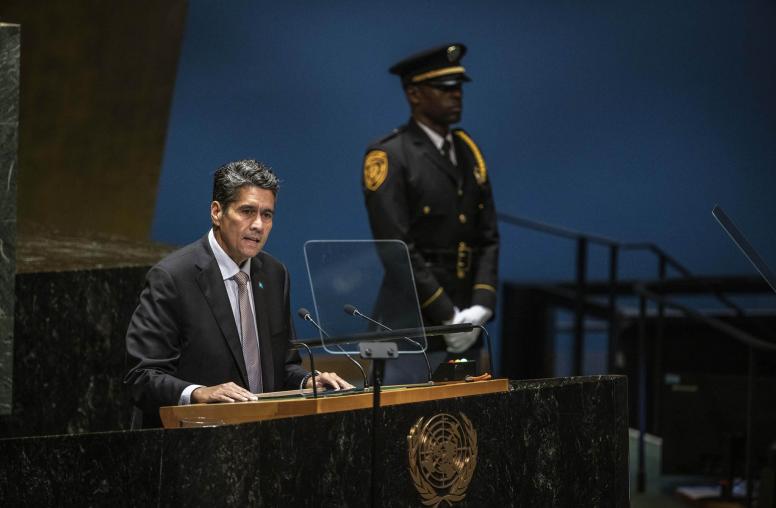China's Influence on Conflict Dynamics in South Asia
USIP Senior Study Group on China and South Asia Launches Final Report
China’s expanding presence in South Asia is reshaping the region, and along the way exacerbating tensions in regional politics and U.S.-China relations from the Himalayan mountains to the Indian Ocean. As the United States works to fulfill its vision of a free and open Indo-Pacific region and to respond to a more assertive China, the final report from USIP’s bipartisan Senior Study Group (SSG) on China and South Asia serves as a road map for the next U.S. administration to advance the Indo portion of that vision.
The SSG’s final report—the fourth in a series—examines China’s influence in South Asian conflict zones and fragile states from a variety of angles. Drawing on the insights of the group’s senior experts, former policymakers, and retired diplomats, the report includes top-level findings and actionable recommendations.
On December 16, the co-chairs and members of the SSG discussed their work and their latest report’s conclusions. The conversation tackled topics such as U.S. interests in South Asia amid China’s growing role, Beijing’s interests in and approach toward the region, China-Pakistan relations, China-India relations, and China’s relations with the smaller South Asian states.
Continue the conversation on Twitter with #ChinaSouthAsia.
Speakers
Jennifer Staats, introductory remarks
Director of East and Southeast Asia Programs, U.S. Institute of Peace; USIP China Senior Study Group Series Executive Director
Richard G. Olson, report briefing
Senior Advisor, United States Institute of Peace; Co-Chair, USIP China-South Asia Senior Study Group
Randall G. Schriver, report briefing
Chairman of the Board, The Project 2049 Institute; Co-Chair, USIP China-South Asia Senior Study Group
Alyssa Ayres
Senior Fellow for India, Pakistan, and South Asia, Council on Foreign Relations; Member, USIP China-South Asia Senior Study Group
@AyresAlyssa
Patrick Cronin
Asia-Pacific Security Chair, Hudson Institute; Member, USIP China-South Asia Senior Study Group
@PMCroninHudson
Sameer Lalwani
Senior Fellow and Director of the South Asia Program, Stimson Center; Member, USIP China-South Asia Senior Study Group
@splalwani
Anja Manuel
Co-Founder and Partner, Rice, Hadley, Gates & Manuel LLC; Member, USIP China-South Asia Senior Study Group
@AnjaManuel1
Daniel Markey
Senior Research Professor in International Relations, Johns Hopkins University School of Advanced International Studies; Member, USIP China-South Asia Senior Study Group
@MarkeyDaniel
Nilanthi Samaranayake
Director, Strategy and Policy Analysis Program, CNA; Member, USIP China-South Asia Senior Study Group
@nilanthis
Vikram J. Singh
Senior Advisor, Asia Center, United States Institute of Peace; Member, USIP China-South Asia Senior Study Group
@VJS_Policy
Jacob Stokes
Senior Policy Analyst, China Program, U.S. Institute of Peace; Project Director, USIP China-South Asia Senior Study Group
@jacobstokes



